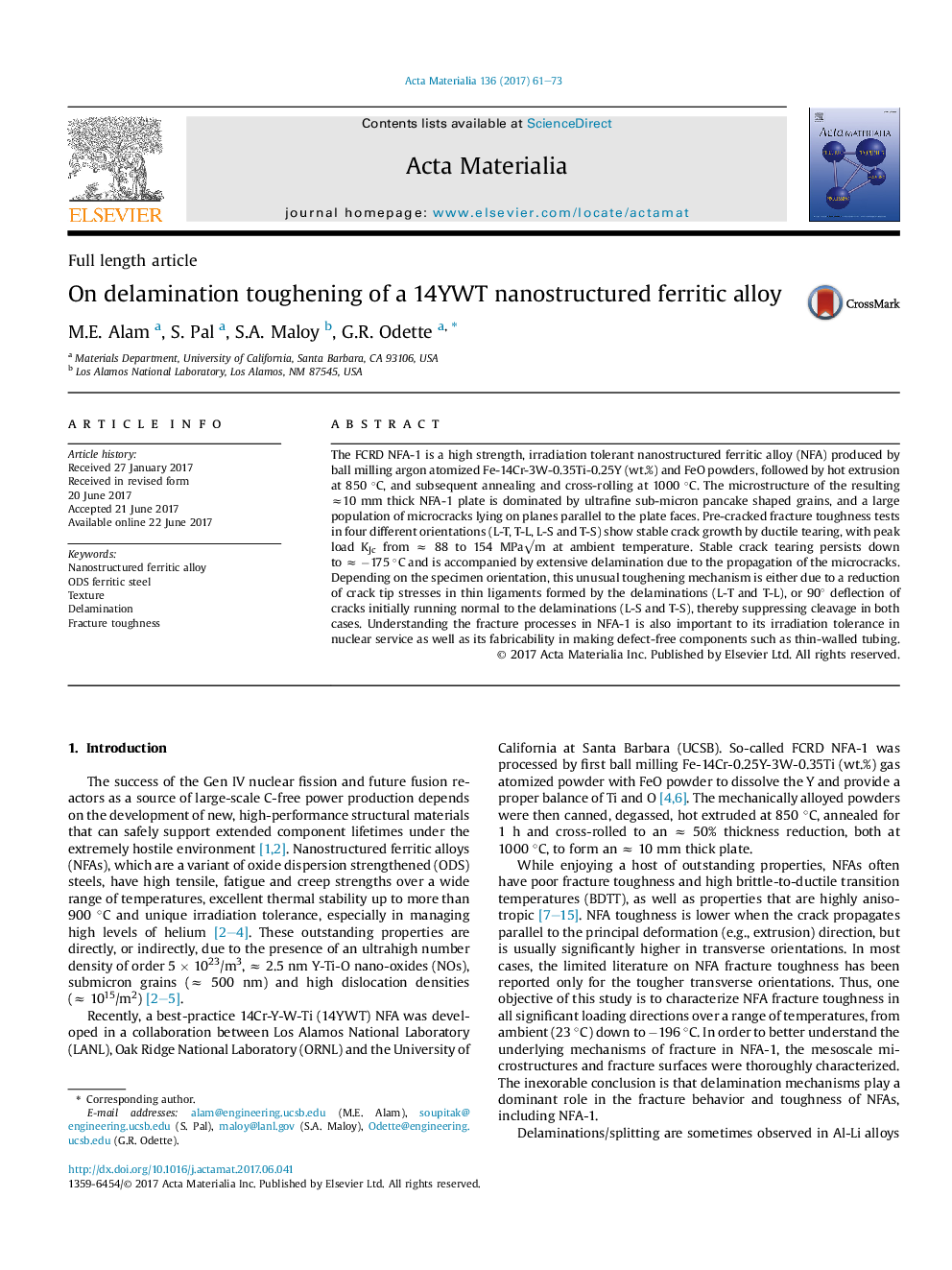| کد مقاله | کد نشریه | سال انتشار | مقاله انگلیسی | نسخه تمام متن |
|---|---|---|---|---|
| 5436102 | 1509540 | 2017 | 13 صفحه PDF | دانلود رایگان |

The FCRD NFA-1 is a high strength, irradiation tolerant nanostructured ferritic alloy (NFA) produced by ball milling argon atomized Fe-14Cr-3W-0.35Ti-0.25Y (wt.%) and FeO powders, followed by hot extrusion at 850 °C, and subsequent annealing and cross-rolling at 1000 °C. The microstructure of the resulting â10 mm thick NFA-1 plate is dominated by ultrafine sub-micron pancake shaped grains, and a large population of microcracks lying on planes parallel to the plate faces. Pre-cracked fracture toughness tests in four different orientations (L-T, T-L, L-S and T-S) show stable crack growth by ductile tearing, with peak load KJc from â 88 to 154 MPaâm at ambient temperature. Stable crack tearing persists down to â â175 °C and is accompanied by extensive delamination due to the propagation of the microcracks. Depending on the specimen orientation, this unusual toughening mechanism is either due to a reduction of crack tip stresses in thin ligaments formed by the delaminations (L-T and T-L), or 90° deflection of cracks initially running normal to the delaminations (L-S and T-S), thereby suppressing cleavage in both cases. Understanding the fracture processes in NFA-1 is also important to its irradiation tolerance in nuclear service as well as its fabricability in making defect-free components such as thin-walled tubing.
226
Journal: Acta Materialia - Volume 136, 1 September 2017, Pages 61-73